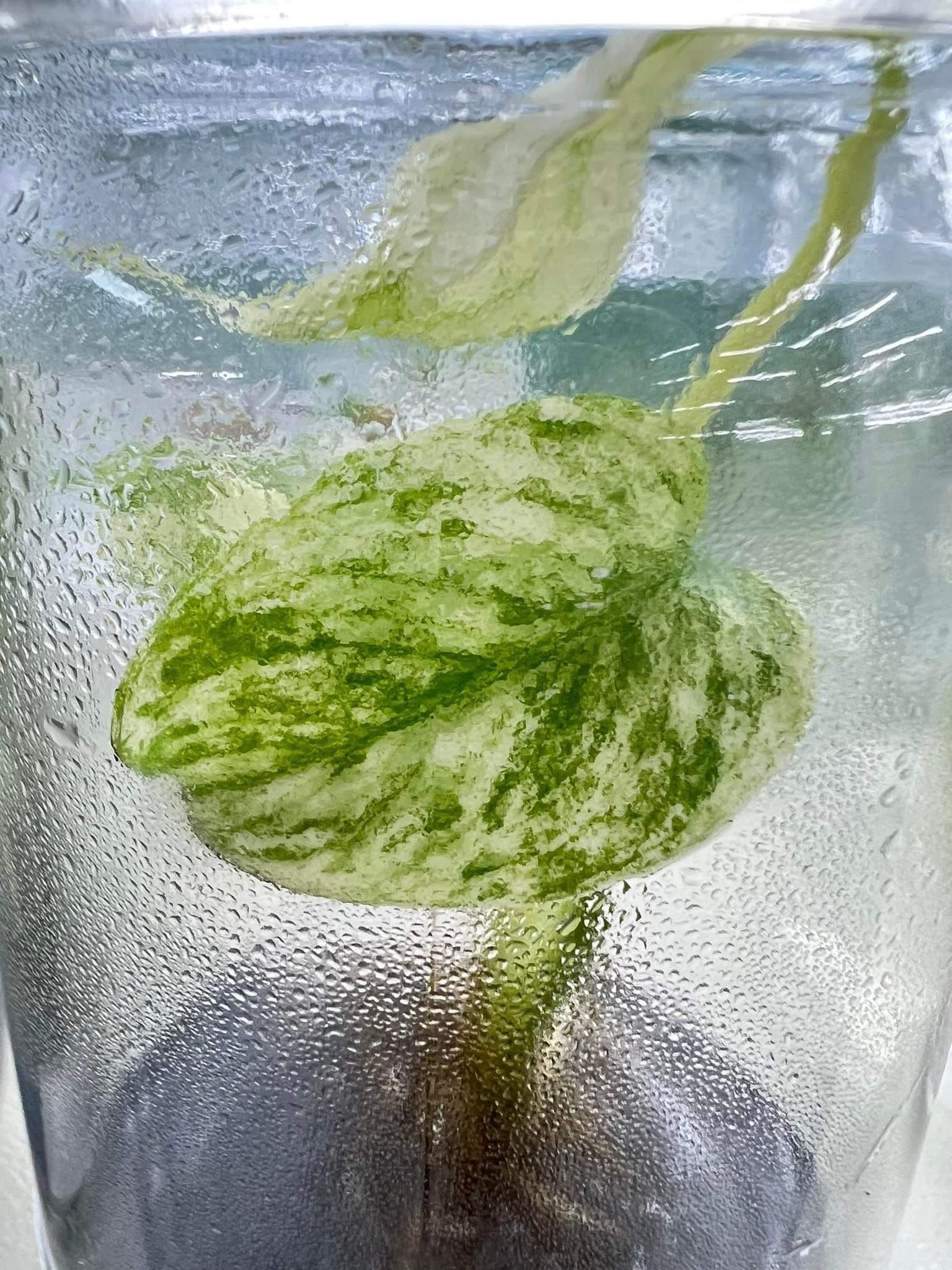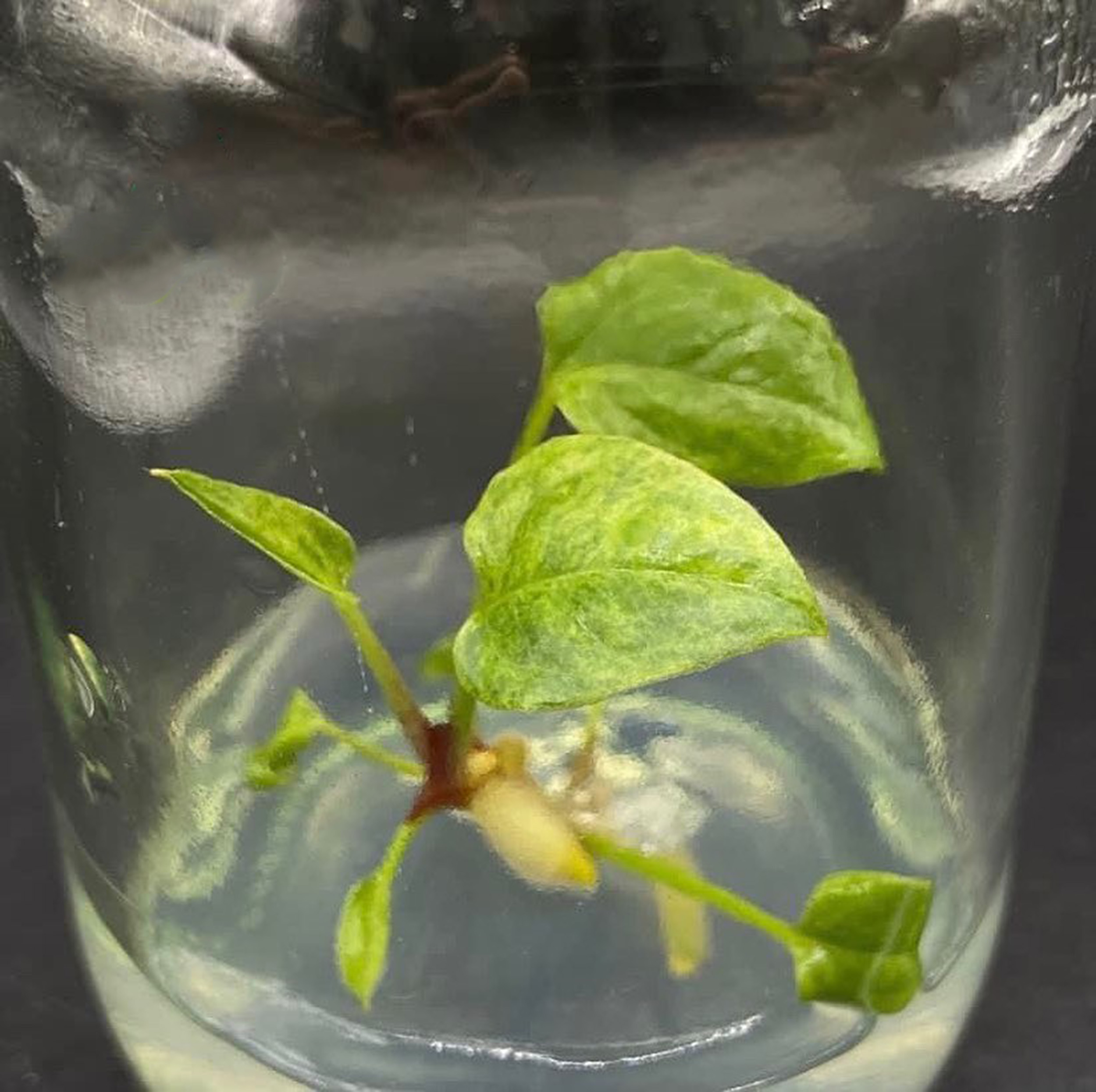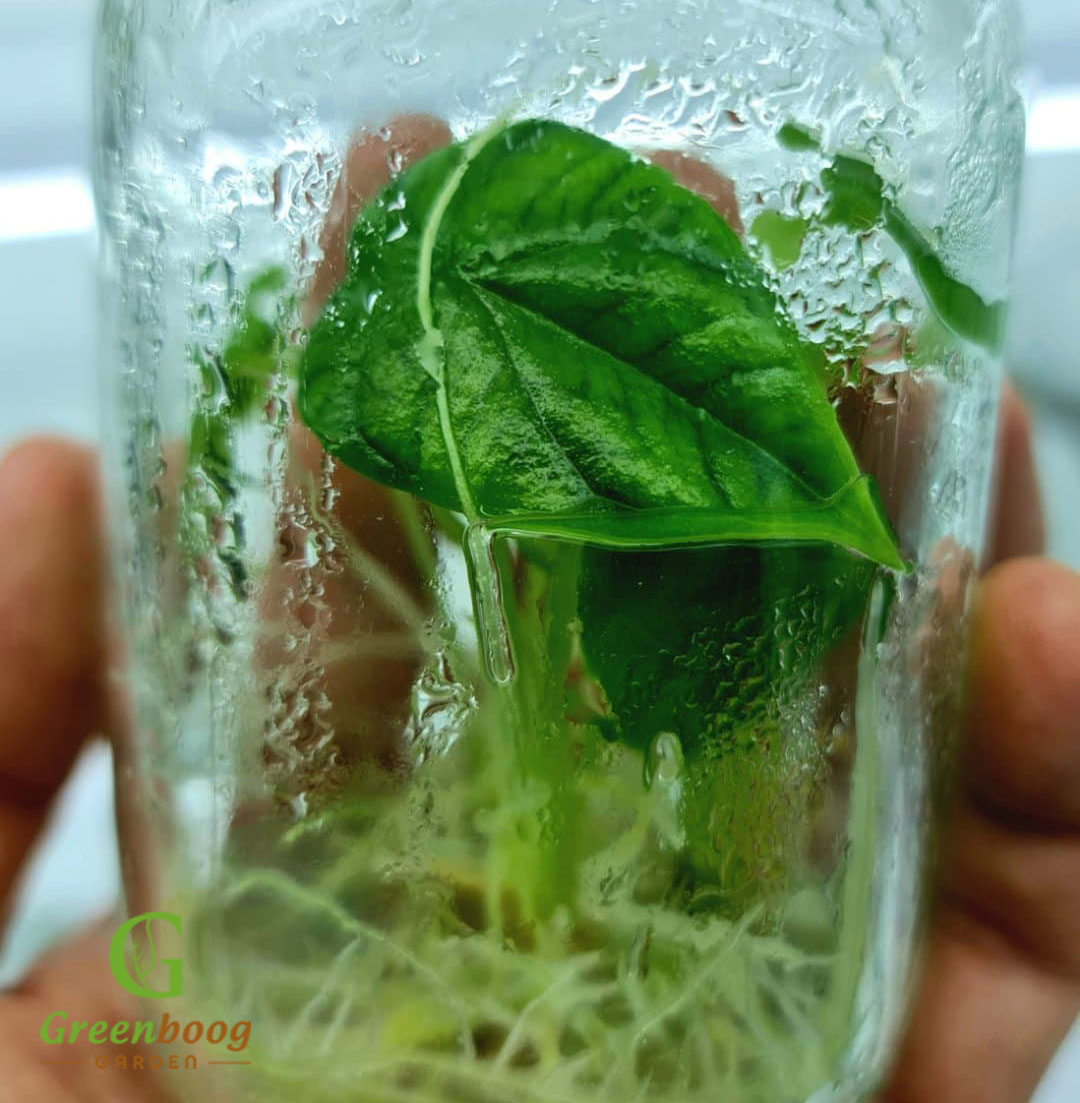The captivating world of aroids, with their intricate foliage and striking blooms, continues to captivate plant enthusiasts. From the majestic monsteras to the vibrant anthuriums, aroids offer a stunning spectrum of beauty and diversity that enriches any indoor space. One of the key methods revolutionizing aroid propagation is tissue culture, a technique that leverages the power of science to deliver healthy, robust plants to collectors worldwide. This comprehensive guide delves into the fascinating world of tissue-cultured aroids, exploring popular varieties, the science behind this technique, and the benefits it offers both growers and collectors. Let’s embark on this journey to discover the captivating allure of these unique plants and how tissue culture plays a pivotal role in their propagation.

Unveiling the World of Tissue Culture: A Closer Look at Aroid Propagation
Tissue culture, a fascinating realm of plant science, involves the propagation of plants using small segments of their tissues. This method, often referred to as micropropagation, offers a controlled and efficient way to multiply plants, generating numerous identical clones from a single source. The process typically begins with the extraction of a small section of plant material, often a leaf, stem, or root tip. This plant material is then placed in a sterile, nutrient-rich growth medium, where it is encouraged to proliferate and form new plantlets. Through a series of carefully orchestrated steps, these plantlets are then nurtured and multiplied, ultimately being hardened off and acclimated to thrive in the home environment.

The Science Behind Tissue Culture
The science behind tissue culture is rooted in the remarkable regenerative capabilities of plant cells. Each individual plant cell contains the genetic information necessary to regenerate an entire organism, a phenomenon known as totipotency. By manipulating the growth environment and carefully selecting the right growth hormones, tissue culture specialists can trigger this latent potential, coaxing the plant material to rapidly divide and differentiate into new, fully functional plants.
The Benefits of Tissue Culture Propagation
The advantages of tissue culture propagation for aroids are numerous. This technique allows for the efficient and reliable production of large quantities of genetically identical plants, ensuring a consistent and predictable quality. Additionally, tissue-cultured plants are typically free from pests, diseases, and viruses, making them a healthier and more robust option for growers and collectors. The controlled environment of the tissue culture lab also allows for the preservation of rare and endangered aroid varieties, safeguarding their genetic diversity for future generations.
Challenges and Considerations
While tissue culture offers many benefits, it is not without its challenges. The process requires specialized equipment, a sterile laboratory environment, and a team of skilled technicians to execute successfully. Additionally, the transition from the controlled lab conditions to the home environment can be a delicate process, requiring careful acclimation and attention to the unique needs of each aroid variety.
Philodendron: Cultivating Diversity through Tissue Culture
Philodendrons, with their diverse foliage and captivating growth habits, have long been a staple among aroid enthusiasts. The ability to propagate these plants through tissue culture has opened up a world of possibilities, allowing growers and collectors to explore a vast array of cultivars and rare varieties.

Exploring the Philodendron Genus
The Philodendron genus encompasses over 480 species, each with its own unique characteristics. From the glossy, heart-shaped leaves of the classic Philodendron ‘Xanadu’ to the intricately lobed foliage of the Philodendron ‘Imperial Red,’ this genus offers a stunning diversity that captivates plant lovers.
Tissue Culture and Philodendron Propagation
Tissue culture has revolutionized the way Philodendrons are propagated, allowing for the rapid multiplication of rare and hard-to-find varieties. By capturing the meristematic tissues of these plants, tissue culture specialists can generate numerous clones, ensuring a steady supply of these coveted aroids.
Challenges and Considerations
While tissue culture offers a reliable method for Philodendron propagation, it is not without its challenges. Some Philodendron varieties may be more recalcitrant to tissue culture, requiring specialized protocols and additional attention. Maintaining the genetic integrity of these plants is also a crucial consideration, as any somaclonal variations can result in undesirable traits.
Anthurium: A Symphony of Colors Through Tissue Culture
The vibrant and captivating Anthurium genus has long been a favorite among aroid enthusiasts, known for its striking, heart-shaped spathes and fascinating inflorescences. Tissue culture has played a pivotal role in the propagation and diversification of this beloved aroid.

Exploring the Anthurium Genus
Anthuriums are renowned for their stunning array of colors, ranging from the classic red spathes to the bold, tropical hues of varieties like Anthurium ‘Midori’ and Anthurium ‘Ace of Spades.’ This diversity has made Anthuriums a popular choice for indoor gardeners and plant collectors alike.
Tissue Culture and Anthurium Propagation
Tissue culture has revolutionized the propagation of Anthuriums, allowing for the efficient and reliable production of new cultivars. By manipulating the growth conditions and media composition, tissue culture specialists can influence the development of specific color patterns, leaf shapes, and growth habits, resulting in a dazzling array of Anthurium varieties.
Challenges and Considerations
While tissue culture has brought forth a wealth of new Anthurium cultivars, it is not without its challenges. Maintaining the genetic stability of these plants is crucial, as Anthuriums can be susceptible to somaclonal variations that can result in undesirable traits. Additionally, the transition from the controlled lab environment to the home setting requires careful acclimation to ensure the long-term health and vigor of these plants.
Monstera: Majestic Leaves Multiplied by Tissue Culture
The captivating Monstera genus, with its iconic perforated leaves and striking growth habits, has long been a beloved staple among aroid enthusiasts. Tissue culture has played a pivotal role in the propagation and distribution of these majestic plants, making them more accessible to a wider audience.

Exploring the Monstera Genus
The Monstera genus encompasses a diverse array of species, each with its own unique characteristics. From the classic Monstera deliciosa to the smaller, compact Monstera adansonii, these plants have captured the hearts of indoor gardeners and plant collectors alike.
Tissue Culture and Monstera Propagation
Tissue culture has revolutionized the propagation of Monsteras, allowing for the rapid multiplication of these plants. By carefully selecting and cultivating the meristematic tissues of Monstera plants, tissue culture specialists can generate numerous clones, ensuring a steady supply of these coveted aroids.
Challenges and Considerations
While tissue culture has made Monsteras more widely available, it is not without its challenges. Maintaining the genetic integrity of these plants is crucial, as Monsteras can be susceptible to somaclonal variations that can result in undesirable traits. Additionally, the transition from the controlled lab environment to the home setting requires careful acclimation to ensure the long-term health and vigor of these plants.
Syngonium: Versatile and Vibrant, Enhanced by Tissue Culture
Syngoniums, with their diverse foliage and captivating growth habits, have long been a favorite among aroid enthusiasts. Tissue culture has played a pivotal role in the propagation and diversification of this versatile genus, making it more accessible to a wider audience.

Exploring the Syngonium Genus
The Syngonium genus encompasses a wide range of species, each with its own unique characteristics. From the classic Syngonium podophyllum to the vibrant Syngonium ‘Neon Robusta,’ this genus offers a stunning array of foliage patterns and growth habits that captivate plant lovers.
Tissue Culture and Syngonium Propagation
Tissue culture has revolutionized the propagation of Syngoniums, allowing for the efficient and reliable production of new cultivars. By manipulating the growth conditions and media composition, tissue culture specialists can influence the development of specific leaf shapes, colors, and growth patterns, resulting in a dazzling array of Syngonium varieties.
Challenges and Considerations
While tissue culture has brought forth a wealth of new Syngonium cultivars, it is not without its challenges. Maintaining the genetic stability of these plants is crucial, as Syngoniums can be susceptible to somaclonal variations that can result in undesirable traits. Additionally, the transition from the controlled lab environment to the home setting requires careful acclimation to ensure the long-term health and vigor of these plants.
Benefits of Tissue Cultured Aroids: Achieving Health and Vigor
The adoption of tissue culture techniques has revolutionized the world of aroid propagation, offering numerous benefits to both growers and collectors. From ensuring genetic purity to promoting robust growth, tissue-cultured aroids have emerged as a superior choice for indoor gardening and plant enthusiasts.
Genetic Purity and Consistency
One of the primary advantages of tissue culture is its ability to maintain the genetic integrity of aroid varieties. By propagating plants from a single, carefully selected source, tissue culture ensures that the resulting clones are genetically identical to the parent plant. This genetic uniformity guarantees consistent growth patterns, foliage characteristics, and other desirable traits, making tissue-cultured aroids a reliable choice for discerning collectors.
Disease and Pest-Free Plants
Tissue culture propagation takes place in a highly controlled, sterile environment, effectively eliminating the risk of pests and diseases that can plague traditionally propagated plants. The meticulous protocols and stringent sanitation measures employed in tissue culture labs ensure that the resulting plants are free from harmful pathogens and insect infestations, providing growers with a healthier and more robust start.
Rapid Multiplication and Availability
Tissue culture’s efficiency in plant propagation allows for the rapid multiplication of rare and sought-after aroid varieties. By leveraging the regenerative capabilities of plant cells, tissue culture specialists can generate numerous clones from a single source, ensuring a steady supply of these coveted plants for collectors and enthusiasts.
Preservation of Biodiversity
Tissue culture plays a crucial role in the preservation of aroid biodiversity, particularly for rare and endangered species. By maintaining mother stock plants in a controlled laboratory environment, tissue culture specialists can safeguard the genetic diversity of these plants, ensuring their long-term survival and availability for future generations.
Choosing the Right Tissue Cultured Aroid for Your Collection
With the abundance of tissue-cultured aroid varieties available, it can be a daunting task to select the perfect plant for your collection. Consider the following factors to guide your decision and ensure a successful addition to your indoor garden.
Assessing Your Growing Conditions
Before choosing a tissue-cultured aroid, it’s essential to assess the growing conditions in your indoor space. Consider factors such as available light, humidity levels, and temperature range to ensure that the selected variety will thrive in your environment.
Considering Your Aesthetic Preferences
Aroids offer a diverse range of foliage shapes, sizes, and coloration. Take the time to explore different tissue-cultured varieties and choose those that align with your personal aesthetic preferences, whether you’re drawn to bold, tropical-inspired plants or more compact, delicate varieties.
Researching Care Requirements
Each aroid genus and species has unique care requirements, from watering needs to fertilization regimes. Thoroughly research the specific care requirements of the tissue-cultured aroid you’re considering to ensure you can provide the necessary conditions for its long-term health and vigor.
Sourcing from Reputable Suppliers
When purchasing tissue-cultured aroids, it’s crucial to source them from reputable suppliers and nurseries. Reliable growers and retailers will provide healthy, true-to-type plants and offer guidance on proper acclimation and care.
Caring for Tissue Cultured Aroids: A Guide to Success
Caring for tissue-cultured aroids requires a nuanced approach, as these plants have specific needs that must be met to ensure their long-term health and vigor. By understanding the unique requirements of these plants, you can create an ideal growing environment and foster the development of your tissue-cultured aroid collection.
Acclimation and Hardening Off
The transition from the controlled laboratory environment to the home setting can be a delicate process for tissue-cultured aroids. To ensure a successful acclimation, gradually expose the plants to higher light levels, reduced humidity, and broader temperature fluctuations, allowing them to gradually adapt to their new surroundings.
Watering and Humidity
Aroids generally thrive in high-humidity environments, and tissue-cultured plants are no exception. Maintain consistent moisture levels in the soil, taking care not to overwater, and consider using a pebble tray or misting to increase the ambient humidity around your plants.
Lighting Requirements
Aroid species have varying light requirements, so it’s essential to research the specific needs of your tissue-cultured varieties. Provide the appropriate light intensity and duration, whether it’s bright, indirect light or more specialized lighting solutions.
Fertilization and Nutrition
Tissue-cultured aroids may require a carefully balanced fertilization regimen to support their growth and development. Use a high-quality, nutrient-rich fertilizer, following the manufacturer’s instructions to avoid over-fertilization, which can be detrimental to the plants.
Pest and Disease Management
While tissue-cultured aroids are often free from pests and diseases, it’s crucial to remain vigilant and address any issues promptly. Regularly inspect your plants for signs of problems and take appropriate action, such as isolating affected plants or using gentle, organic pest control methods.
The Future of Aroid Propagation: Exploring the Potential of Tissue Culture
As the demand for unique and rare aroid varieties continues to grow, the role of tissue culture in their propagation and distribution becomes increasingly vital. This innovative technique holds vast potential for the future of aroid horticulture, offering a glimpse into the exciting possibilities that lie ahead.
Advancements in Tissue Culture Protocols
Ongoing research and development in the field of tissue culture are continuously refining and optimizing the protocols used for aroid propagation. From the enhancement of growth media to the optimization of environmental conditions, these advancements are leading to improved success rates, increased plant vigor, and the ability to propagate even the most recalcitrant aroid species.
Genetic Manipulation and Cultivar Development
The precise control offered by tissue culture opens the door to genetic manipulation, allowing for the selective breeding and development of new aroid cultivars. Through techniques like somatic embryogenesis and genetic engineering, tissue culture specialists can potentially create unique foliage patterns, novel color variations, and even introduce desirable traits like improved pest or disease resistance.
Preservation of Biodiversity and Rare Species
As the global environmental landscape continues to face challenges, the role of tissue culture in the preservation of aroid biodiversity becomes increasingly crucial. By maintaining and propagating rare and endangered species, tissue culture can serve as a vital safeguard, ensuring the survival and availability of these invaluable genetic resources for future generations.
Commercialization and Accessibility
The scalability and efficiency of tissue culture propagation are poised to make aroid plants more accessible to a wider audience. As commercial-scale production increases, these captivating aroids may become more widely available and affordable, allowing more plant enthusiasts to enjoy their beauty and diversity in their homes and gardens.
Conclusion
The allure of aroids, with their intricate foliage and striking blooms, continues to captivate plant enthusiasts worldwide. Tissue culture, a remarkable realm of plant science, has revolutionized the propagation of these captivating plants, offering a reliable and efficient means of multiplying and distributing aroid varieties. From the majestic monsteras to the vibrant anthuriums, this comprehensive guide has explored the fascinating world of tissue-cultured aroids, delving into the science behind this technique, the benefits it offers, and the popular varieties that have been transformed by its power.
As the demand for unique and rare aroid plants continues to grow, the future of aroid propagation holds immense potential, with tissue culture poised to play an increasingly crucial role. From advancements in genetic manipulation to the preservation of biodiversity, the possibilities are endless, promising a world of aroid beauty and diversity that will continue to captivate plant enthusiasts for generations to come.
Ready to Dive into the World of Tissue Culture Aroids? Explore our curated collection of Tissue Culture Aroid Plants at Greenboog, where we’ve harnessed the power of science to bring you the most sought-after and rare varieties. From the vibrant variegation of Philodendrons to the striking foliage of Monsteras, our tissue-cultured plants are disease-free, robust, and ready to thrive in your collection. Discover the future of plant propagation and elevate your indoor jungle with Greenboog’s Tissue Culture Aroids.



1 thought on “Commonly Tissue Cultured Aroid Plants”